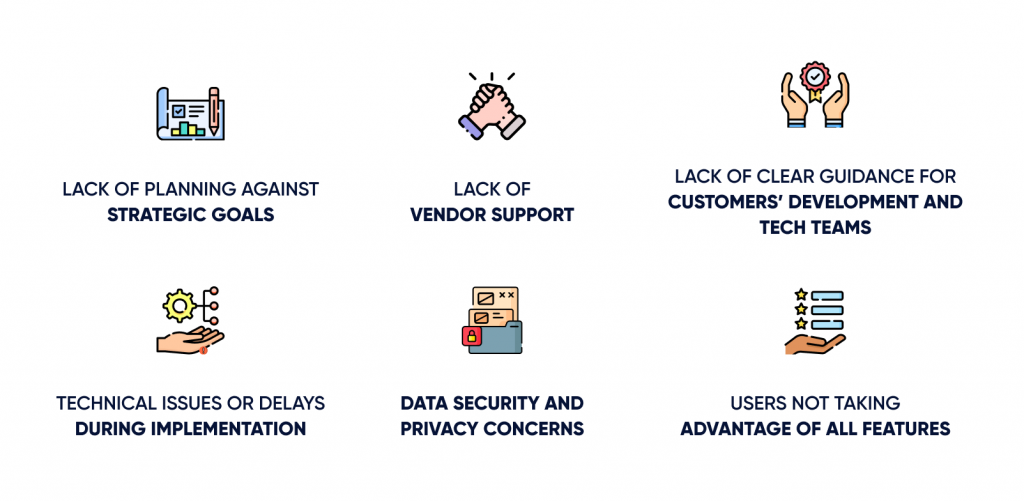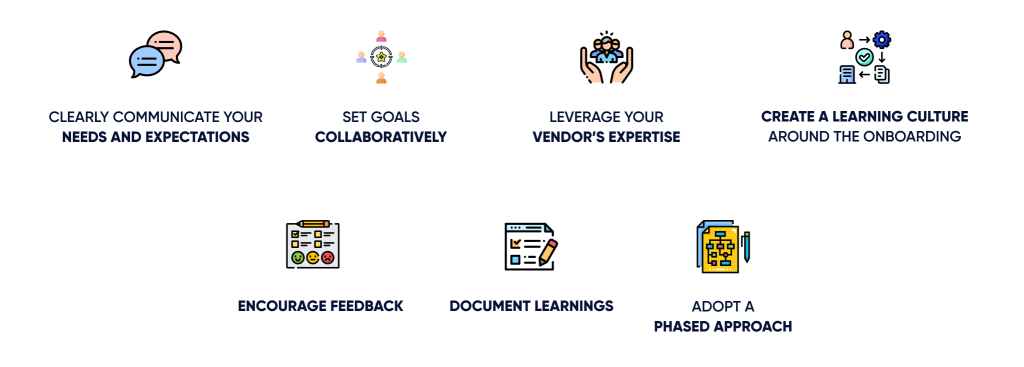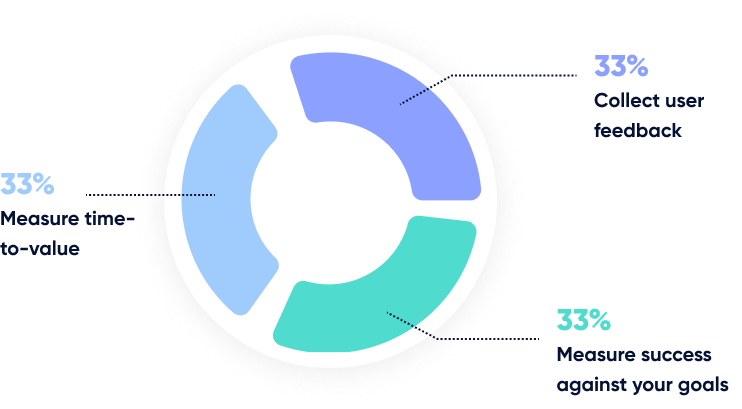How to reduce time-to-value from your SaaS platform: Advice from an award-winning SaaS consultant
As a brand executive or owner, you know how important it is to optimize the value of your marketing technology (martech) investment. Measuring—and reducing—time-to-value is key to achieving this.
It sounds simple. But even those with experience in SaaS implementation don’t always understand all the nuances of time-to-value. How do I know this? Because over the last 12 years I’ve not only been a SaaS customer myself—I’ve also worked as a consultant on dozens of digital transformations and complex SaaS implementations for brands in multiple sectors.
Updated on 9 Oct 2025
That’s why this article will delve into the different ways of looking at time-to-value, and why it’s so important to define what this means for your organization. We’ll then go on to discuss how to overcome common SaaS onboarding challenges, before looking at onboarding best practices and practical tips for reducing your time-to-value.
Why understanding and defining time-to-value is so important
A few years ago, I was working as a consultant on a complex digital transformation project for a well-known denim brand. The brand had recognized the need for an enterprise resources planning (ERP) system to streamline its processes and align its eCommerce platform with broader business objectives.
Sadly, the company underestimated how long the transformation would take—as well as many of the complexities involved. In particular, it lacked clear objectives or realistic timeframes. When initial progress proved slow, this caused frustration and doubt about the value of the transformation.
This is why it’s important to be clear about what time-to-value is. And about what it means for your organization.
Most modern marketers know the basics of onboarding time-to-value. It’s the time it takes from the moment of onboarding a new SaaS tool to the point when it begins delivering quantifiable value. Optimizing your time-to-value is critical for brands like yours, since it directly impacts the return on your martech investments.

In the case of the denim brand, it hadn’t set clear, definable goals—much less shared them with its vendor. The result was confusion and frustration. After all, how can you measure time-to-value if you don’t define what value means to your organization?
Because I was consulting on the transformation, I stepped in and organized a series of workshops between the brand and the SaaS vendor. We discussed the concept of time-to-value in depth, starting with core ideas and questions:
- What were the brand’s core objectives?
- What value were they seeking to realize?
- What milestones would help achieve this?
- What were realistic timeframes for hitting each milestone?
This discussion led to the brand appreciating the scale of the transformation and the time required, while the vendor became more aware of the brand’s business needs and aspirations—and how they could help prioritize them.
In short, you must take the time to set clear goals during the onboarding process. This enables you to track progress effectively. And helps to accelerate the realization of those objectives.
And, while value often varies from company to company, don’t feel you need to limit yourself to a single goal. Some brands set an initial goal of getting to the point when it can launch its first campaign on a new martech platform. Others believe it’s more valuable to have its whole marketing team trained in the use of the new platform, so set that as its goal.
If you set multiple goals, that’s fine. But if you do, you must then take the time to prioritize them and communicate them to your vendor so they can deliver them in that order.
Remember also that time-to-value doesn’t have to stop when you hit your first goal. Setting milestones is a process that doesn’t have to stop. After all, working with a SaaS vendor is about building a long-term relationship and developing new features—even suggesting new features that will add value to your organization.
Now I work at Insider, for example, we have one client who continually asks us for new features. While this can sometimes be frustrating, through that relationship we’ve developed some of the most interesting and valuable features of our platform over the years. This is the real value of a SaaS partnership. You can keep increasing value—and measuring your time-to-value—over longer periods.
Overcoming common SaaS onboarding challenges
Setting clear goals and measuring the time-to-value associated with those goals can also help to overcome the most common SaaS onboarding challenges. These challenges include lack of vendor transparency, confusing or complicated user interfaces, and insufficient training, as well as:

Overcoming these challenges and reducing time-to-value go hand in hand, so let’s take a look at onboarding best practices that will help achieve both of these goals.
Best practices for successful onboarding
As a brand, you can reduce your time-to-value significantly by adhering to the following best practices:

1. Clearly communicate your needs and expectations
As already discussed, make sure you take the time to define and prioritize your brand’s specific needs and goals. Then ensure your vendor understands those needs early in the process.
2. Set goals collaboratively
SaaS vendors will be more aware of the technical capabilities of their platform than you are. That’s why it’s so important to work on your goals together. Joint goal-setting helps to guarantee alignment between your brand and the SaaS vendor and avoid any misunderstandings or nasty surprises later.
3. Leverage your vendor’s expertise
SaaS vendors often have a wealth of resources available that can help speed up the onboarding process, as well as specific kinds of support and training. Try to use all available resources from your vendor to speed up the onboarding process.
4. Create a learning culture around the onboarding
Most employees are happy to learn new skills to help them achieve their goals and develop their careers. Encouraging team members to learn the new system and become self-sufficient promotes ownership and helps reduce onboarding time.
5. Encourage feedback
Part of the learning culture we just mentioned is getting your team to give feedback during the onboarding and training process. What works well? What could be improved? Listening to your people increases their engagement and their feedback facilitates improvements and enhancements during onboarding.
6. Document learnings
Keep track of what works and what doesn’t during the onboarding process. These insights will be helpful for future reference and for onboarding other team members, as well as helping to smooth the process itself.
7. Adopt a phased approach
Once you and your vendor have finalized your goals and priorities, take a phased approach to onboarding. Instead of implementing everything at once, start with the most critical features first. This helps avoid the risk of overwhelm.
8. Test and adjust
One of the benefits of a phased approach to implementation is you can test constantly throughout the onboarding process. This allows you and your vendor to make adjustments as needed.
Practical steps to reduce your onboarding time-to-value
Having reviewed best practices, let’s now dive into the specific, actionable steps you can take as a brand to reduce your time-to-value:

Step 1: Clearly define your goals
I’ve mentioned goals several times already and that’s because they’re so important. The biggest mistake brands make with their SaaS investments is not defining their goals before implementation. Define your goals and these will serve as your reference point for measuring value.
Step 2: Assign a dedicated onboarding team
A team responsible for understanding, implementing, and troubleshooting the SaaS solution can streamline the onboarding process. It makes feeding back to your vendor simpler and more efficient, as well as collating feedback from internal stakeholders during the onboarding.
Step 3: Hold regular training sessions
This is important during and after onboarding. During onboarding, it ensures your users realize value as soon as possible. After initial onboarding, it also helps your regular users stay up to date with any new features and use cases, which helps ensure you continue to get the most value out of the platform.
Step 4: Subscribe to your vendor’s content
Vendors like to promote their new features and capabilities publicly, so make sure you and your users follow your vendor’s social media accounts and sign up for its email newsletters and product update pages. That way, you won’t miss any new developments.
Step 5: Communicate regularly
Open and constant communication is essential to a successful SaaS onboarding. Agreeing on a check-in cadence is one way to do this, as are weekly alignment sessions focused on your business goals and priorities.
Whatever methods you choose, agree them with your vendor and then stick to them.
Follow all these steps, and you’ll be well on the way to a faster time-to-value with your SaaS onboarding. But how do you know you’ve been successful? That’s where measuring comes in.
How to measure onboarding effectiveness
Nothing in business can improve unless it’s measured, as the old saying goes. From my experience working with dozens of brands worldwide, there are three main ways to measure onboarding effectiveness:

1. Collect user feedback
Regularly asking your users for feedback will tell you how often and how effectively they’re using the platform. This can show you where you’re having issues and where your vendor may be able to help with more training, more support, or a new feature.
2. Measure success against your goals
Have your goals been achieved? How far off are they? How much is left to do? This is why it was so important to define these clearly early on, so you can now use them to measure success.
3. Measure time-to-value
It takes a long time to reach a clearly defined return on investment (ROI), so most organizations assess time-to-value as the time taken to achieve their most important goals. These can include:
- Time taken to achieve a single unified customer view
- Time taken before you can launch your first marketing campaign
- Time taken before all your key team members are fully trained in how to use the new platform
Are you looking to invest in a new martech platform?
Most marketers understand that a shorter onboarding time-to-value translates to a quicker realization of the benefits of your SaaS platform. Hopefully, this blog has helped give you a deeper insight into why that is, how to avoid the potential pitfalls, and how to create a more robust onboarding strategy that will help optimize your martech investments.
If you’re interested in finding out how we could help you with your martech needs, talk to us. We’re always happy to help.



















